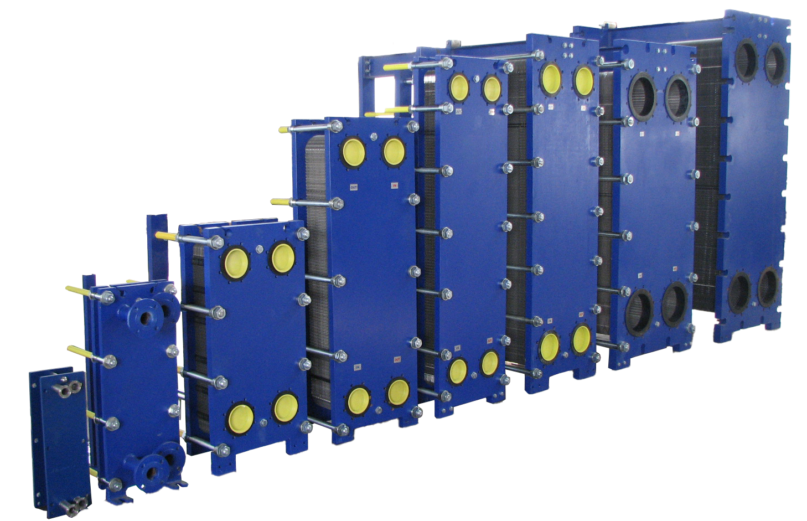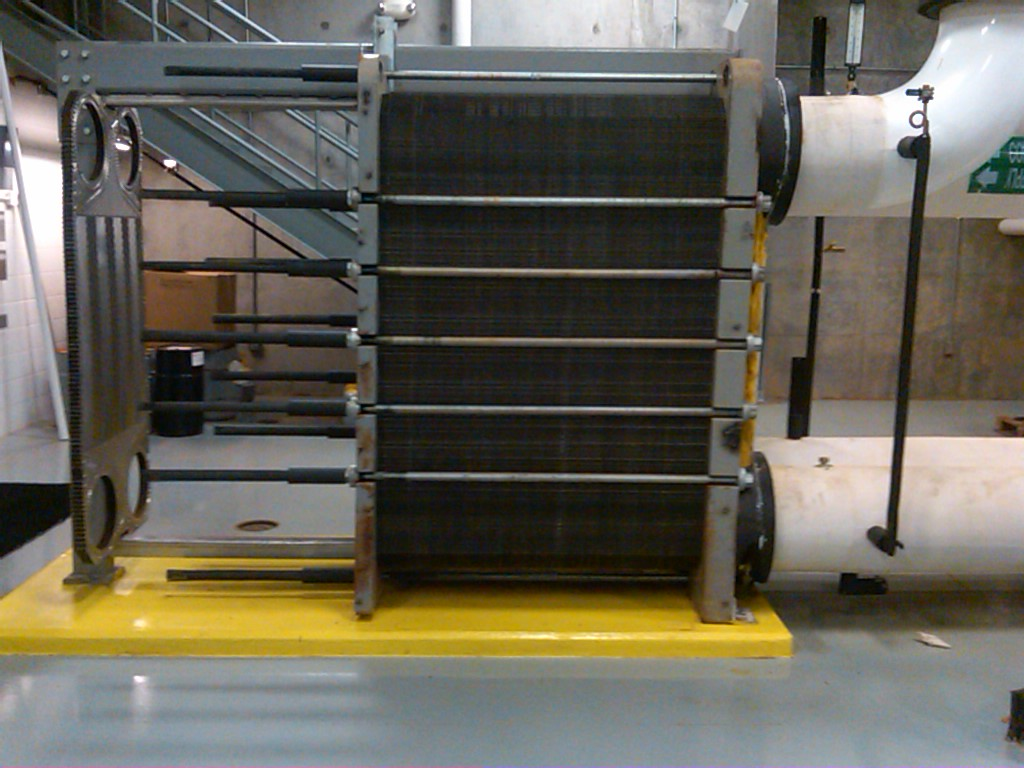In the world of industrial processes and applications, efficient heat transfer is a critical requirement for optimal performance and productivity. Among the various heat exchanger types, plate and frame heat exchanger have emerged as workhorses, renowned for their versatility, compact design, and exceptional thermal efficiency. These robust and modular devices have become indispensable across a wide range of industries, from food and beverage to chemical processing, HVAC, and beyond. In this comprehensive guide, we'll explore the advantages, applications, and key considerations when working with plate and frame heat exchangers.
The Anatomy of Plate and Frame Heat Exchangers
Plate and frame heat exchangers consist of a series of corrugated metal plates sandwiched together within a sturdy frame. These plates are designed with intricate patterns that create turbulence and maximize heat transfer between the hot and cold fluids flowing on either side of the plates. Gaskets are used to seal the gap between the plates, preventing leaks and ensuring the separation of the fluid streams.
What are the key components of a plate and frame heat exchanger?
The key components of a plate and frame heat exchanger are the corrugated metal plates, a sturdy frame to hold the plates together, and gaskets to prevent leaks between the plates.
Advantages of Plate and Frame Heat Exchangers
One of the primary advantages of plate and frame heat exchangers is their compact and space-saving design. These devices offer a large heat transfer surface area within a relatively small footprint, making them an ideal choice for applications where space is limited. Additionally, their modular construction allows for easy expansion or contraction by adding or removing plates, providing flexibility to accommodate changing process requirements.
Another significant advantage is their exceptional thermal efficiency. The corrugated plate design creates turbulence and enhances heat transfer, resulting in higher overall efficiency compared to other heat exchanger types.
What are the main advantages of using plate and frame heat exchangers?
The main advantages of using plate and frame heat exchangers include their compact and space-saving design, modular construction for easy expansion or contraction, exceptional thermal efficiency due to the corrugated plate design, and ease of maintenance and cleaning.
Applications of Plate and Frame Heat Exchangers
Plate and frame heat exchangers are versatile and find applications across a wide range of industries. In the food and beverage industry, they are commonly used for pasteurization, sterilization, and cooling processes. In chemical and pharmaceutical manufacturing, they facilitate heat transfer in various reactions and separation processes. HVAC systems also rely on plate and frame heat exchangers for efficient heating and cooling of buildings.
Other applications include power generation, petrochemical processing, and industrial refrigeration, to name a few. The ability to handle a variety of fluids, including liquids, gases, and two-phase mixtures, further contributes to the widespread use of these heat exchangers.
Maintenance and Cleaning Considerations
While plate and frame heat exchangers offer numerous advantages, proper maintenance and cleaning are crucial to ensure optimal performance and longevity. Over time, fouling and scaling can occur on the plate surfaces, reducing heat transfer efficiency and potentially leading to blockages or leaks.
Regular cleaning is essential to remove these deposits and maintain the heat transfer capability of the plates. Depending on the nature of the fouling and the materials involved, various cleaning methods can be employed, such as chemical cleaning, high-pressure water jetting, or mechanical brushing.
Why is regular cleaning important for plate and frame heat exchangers?
Regular cleaning is important for plate and frame heat exchangers because fouling and scaling can occur on the plate surfaces over time, reducing heat transfer efficiency and potentially leading to blockages or leaks. Proper cleaning helps remove these deposits and maintain the heat transfer capability of the plates.
Gasket Selection and Maintenance
Gaskets play a critical role in plate and frame heat exchangers, ensuring proper sealing between the plates and preventing leaks. However, gaskets can degrade over time due to thermal cycling, chemical exposure, or mechanical stress, leading to potential leaks and cross-contamination between the fluid streams.
Selecting the appropriate gasket material based on the operating conditions and fluid compatibility is crucial. Regular inspection and replacement of gaskets according to manufacturer recommendations or when signs of wear are detected can help maintain the integrity and performance of the heat exchanger.
Thermal Expansion and Plate Alignment
Plate and frame heat exchangers are designed to accommodate thermal expansion and contraction during operation. However, if the thermal expansion is not properly managed or if the plates become misaligned, it can lead to gasket damage, leaks, and potential plate deformation.
Proper installation, with adequate provisions for thermal expansion, and regular inspections to ensure plate alignment are essential for mitigating these issues and preventing potential damage or downtime.
What are the potential consequences of improper thermal expansion management in plate and frame heat exchangers?
If thermal expansion is not properly managed in plate and frame heat exchangers, it can lead to gasket damage, leaks, and potential plate deformation. These issues can result in reduced heat transfer efficiency, cross-contamination between fluid streams, and potential equipment failure if left unchecked.
Plate and Frame Heat Exchanger Selection and Sizing
Selecting the appropriate plate and frame heat exchanger for a specific application requires careful consideration of various factors, such as the required heat transfer capacity, operating temperatures and pressures, fluid properties, and any specific design constraints or regulations.
Proper sizing is crucial to ensure the heat exchanger meets the desired performance requirements while avoiding oversizing, which can lead to inefficient operation and increased costs.
What are some key factors to consider when selecting and sizing a plate and frame heat exchanger?
Some key factors to consider when selecting and sizing a plate and frame heat exchanger include the required heat transfer capacity, operating temperatures and pressures, fluid properties (such as viscosity, density, and thermal conductivity), any specific design constraints or regulations, and the available space or footprint for installation.
Conclusion
Plate and frame heat exchangers and gasketed plate heat exchanger have earned their reputation as workhorses in the field of heat transfer due to their versatility, compact design, and exceptional thermal efficiency. These robust and modular devices have become indispensable across a wide range of industries, facilitating efficient heat transfer in various processes and applications. By understanding the advantages, applications, and key considerations for maintenance, gasket selection, thermal expansion management, and proper sizing, you can maximize the performance and longevity of your plate and frame heat exchangers. Regular maintenance, including cleaning and gasket replacement, is essential to prevent fouling, scaling, and leaks, ensuring optimal heat transfer and preventing costly downtime. Additionally, proper installation and alignment, as well as accommodating thermal expansion, can help mitigate potential issues and ensure reliable operation.








.jpg)
No comments:
Post a Comment